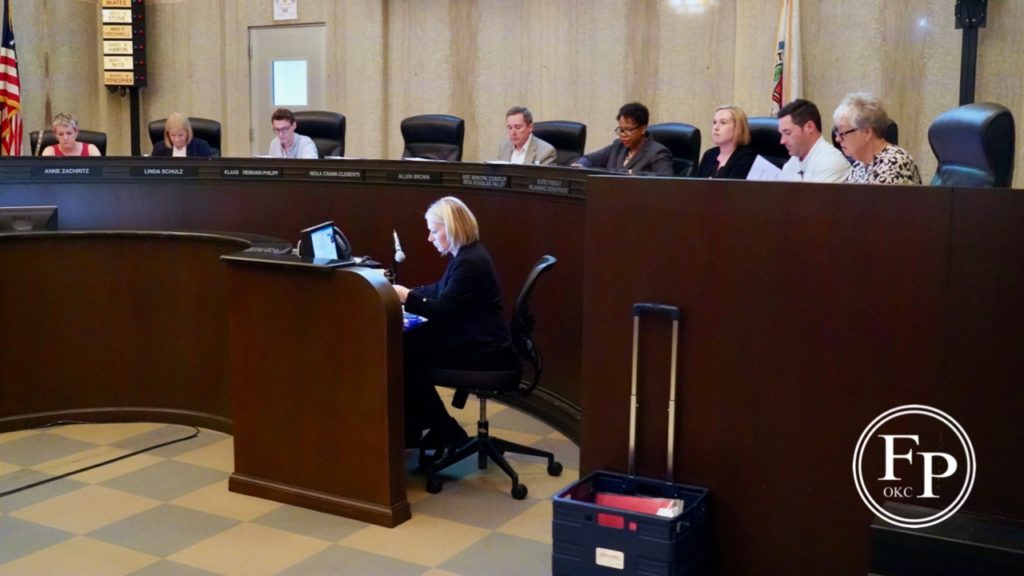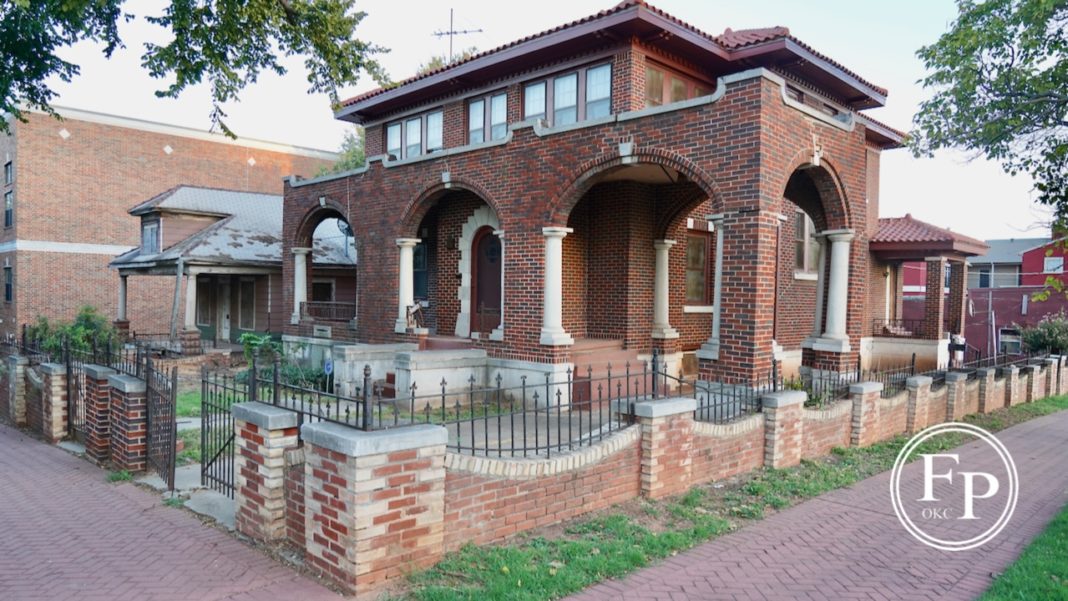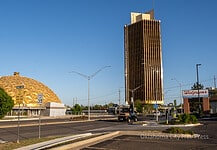Last Updated on October 2, 2019, 8:15 PM | Published: October 2, 2019
The Oklahoma City Historic Preservation Commission had plenty of business to attend to Wednesday with a meeting that lasted four and one-half hours covering a wide array of business.
Luster/Lyons property
The HPC heard a request from the Alliance for Economic Development that the historic Luster/Lyons property in Deep Deuce at 300 NE 3rd St. be designated a historic landmark. The Alliance owns the property.
The request passed unanimously. It now moves on to the Planning Commission where it will be heard at their October 10th meeting. If they pass it, the request will be decided by the City of Oklahoma City Council.
Cathy O’Connor, executive director for the Alliance told Free Press that they have already established a steering committee at the request of Ward 7 City Councilwoman Nikki Nice.
O’Connor said the steering committee is made up of descendants of the Lyons, long-time community members of Ward 7 who know the property’s significance, and Councilwoman Nice.
Nice has been an active proponent of preserving the property because of its location in Deep Deuce, the residential, retail, and entertainment district developed by black Oklahoma City residents during the decades of legalized segregation.
What it means
To Oklahoma City’s black community, Sidney Daniel Lyons represents enterprise and brilliance in black business development.
It is a story of someone who, through years of hard work and developing his own line of hair and beauty products for African-Americans, was able to thrive in spite of a racist culture and laws intentionally designed to hold back black people.
Nice gave some important details about the property on her Facebook page in February for Black History Month. Following is an excerpt.
As president and sole owner of East India Toilet Goods and Manufacturing Company, he advertised and marketed his products to African American customers from coast to coast but especially in the South.
Lyons amassed a fortune by his entrepreneurship. He owned rental houses and commercial property, including a block of business buildings on Second Street, and owned property in Guthrie, in the Choctaw Nation, and in Texas.
In the early 1930s, he invested in the oil business, drilling on and leasing his properties in the OKC Field. The East India toiletries plant, which closed in 1935, was located at 316 North Central Avenue.
The factory stood a half block from his residence, a two-story, brick mansion that he built in the late 1920s at 300 Northeast Third Street. The house was listed in the National Register of Historic Places in 1983 and is known as the Melvin F. Luster House.
O’Connor said the Alliance will not sell the property unless the purchaser agrees for it to meet historic landmark standards.
They imagine that the mansion could be perhaps a bed and breakfast since it is so close to downtown and Bricktown.
They intend for there to be some sort of memorial in the mansion that lets people know the significance of the property, O’Connor said.
Preserving neighborhoods
Ten items came before the commission that all had to do with applying standards that will help preserve the historic beauty of a neighborhood without taking over individual personal properties.
Generally, these are historic preservation design questions that some homeowners don’t even understand need a Certificate of Appropriateness meaning the work to be done will maintain the historic nature of the neighborhood.
One agenda item was about cheek walls that hold back earth just on a set of steps that go up through a terrace or berm. That type of wall is a particular signature of the historic neighborhoods in OKC.
Another item was about the design of windows being used to replace original, unique windows in a home in Edgemere Park.
Yet another item was about cleaning up an approved modification from 1983 and addressing the issues that created, but with a design that is not in the specifications for the neighborhood. The item was denied.

Some of the hardest items to come before the commission is where a homeowner had a runaway contractor who built something they were not supposed to do or the homeowner simply didn’t think to check about standards of building and rebuilding before.
One long deliberation was on a new design for almost doubling the footprint of a house by adding onto the back of a small 1930s house in Crown Heights.
Members of the commission struggled with the desire of the developer to expand the house and make it more livable for his client but then to preserve not just the front of the house.
Members continued to raise issues that seemed to revolve around this question: If developers are allowed to expand homes where there is little if any back yard, is that preserving the historic character of a neighborhood?
Members of the commission are:
- Allen Brown, AIA, Chair
- Neila Crank-Clements, Vice-Chair
- Taylor Fudge
- Maryjo Meacham
- Klaas Reimann-Philipp, AIA
- Linda Schulz
- Anne Zachritz, Esq.
Staff members are:
- Katie Friddle, Historic Preservation Officer
- Angela Yetter, Associate Planner
- Rita Douglas-Talley, Municipal Counselor
Founder, publisher, and editor of Oklahoma City Free Press. Brett continues to contribute reports and photography to this site as he runs the business.










